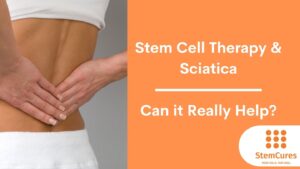What are stem cells and what is stem cell therapy?
If you’ve ever investigated cutting-edge new therapies for treating pain, you may have heard of stem cell therapy. Hailed by many as the future of medicine, this minimally invasive treatment could soon be widely adopted to combat a range of serious illnesses. So, what exactly are stem cells, and how are they used in stem cell therapy? In this brief guide, we cover the basics of this exciting treatment.
What are stem cells?
Stem cells represent the body’s foundational material as they can develop into a range of different cells forms with specialized functions such as brain, heart, blood, or muscle cells. Sometimes, they repair damaged tissues or self-renew, becoming new stem cells. It is worth noting that no other cells in the human body possess the natural power to create new cells types, something which makes stem cells so important and useful.
What are the different types of stem cell?
There are three primary stem cell types, including:
- Embryonic stem cells: These cells are found in embryos aged between three and five days. Such embryos are referred to as blastocytes and contain around 150 cells. Embryonic stem cells are pluripotent, meaning they can easily proliferate into more stem cells or become specialized cells. Due to the power and versatility of these cells, they can be used to regenerate diseased organs or tissues. Perhaps unsurprisingly, there are many ethical concerns surrounding the use of embryonic cells in medical treatment. However, current stem cell therapy for pain and other conditions is generally restricted to adult stem cells.
- Adult stem cells: Adult stem cells are present in small quantities in adult human tissues such as fat and bone marrow. They are less versatile than embryonic cells as they can turn into only a small range of specialized cells. Despite this, emerging evidence indicates that adult cells may be useful in treating a wide range of problems.
- Induced pluripotent stem cells: Scientists recently managed to transform regular adult cells into stem cells using specialist genetic technology. In essence, they reprogrammed the genetic material in the cells to make them act like embryonic cells. This promising new technique may help to combat a range of serious diseases in the future. For now, however, scientists do not know whether this kind of genetic modification could produce adverse effects in humans.
- Perinatal stem cells: Stem cells are present in umbilical cord blood and amniotic fluid. These cells are known as perinatal stem cells and, like embryonic stem cells, possess the ability to become a range of different specialized cells. As the wider public starts to learn about the powers of stem cells to treat disease, an increasing number of people are choosing to donate their cord blood in stem cells treatments and for use in clinical research.
What is stem cell therapy?
In short, stem cell therapy is a medical intervention involving the introduction of stem cells into a damaged or diseased part of the body to aid healing or regeneration. There are several types of stem therapy currently in use or development. By far the most well-established kind of stem cell treatment is blood stem cell transplantation, a method used to address a wide range of diseases affecting the blood and immune system such as lymphoma, leukemia, Hurler syndrome, and myeloma. Skin stem cells have also been adopted as a treatment for patients with severe, life-threatening burns affecting large areas of the body.
Perhaps the latest frontier in stem cell therapy, however, is in pain management and regenerative therapy for injuries that would otherwise require surgical intervention. An increasing number of people who suffer from chronic back pain, severe arthritis, rotator cuff tears, and other degenerative conditions are discovering that stem cell therapy offers effective and lasting results.
How is stem cell therapy administered?
Stem cell therapy for pain relief usually involves aspirating stem cells from the body (such as those found in fat or bone marrow) and injecting them into the affected area. Injections take four forms, including:
- Intravenous (IV) injections: IV injections are very easy to administer and do not require anesthesia. The process usually takes between 20 and 30 minutes per session.
- Intra-articular (IA) injections: IA injections are administered directly into an injured or painful joint and are commonly used in conditions such as arthritis. Again, this method does not require anesthesia and is relatively quick and painless.
- Intramuscular (IM) injections: IM injections are delivered directly into affected muscles. They are considered very safe and do not require anesthesia.
- Intrathecal procedures (lumbar punctures): It is sometimes necessary to administer stem cells intrathecally to treat neurological conditions. This means that they are delivered straight into the spinal fluid, surpassing the blood-brain barrier. This method requires local anesthesia and the help of a medical professional experienced in delivering lumbar punctures.
How long do the effects of stem cell therapy last?
Following a stem cell injection, a patient’s body will continue to form new cells for up to a year. However, many patients report improvements within a week or two of treatment. For optimal results, it is important that patients undergo physical therapy following stem cell therapy, as well as follow any recommendations from physicians such as topical treatments or massage regimes.
Should I try stem cell therapy for pain relief?
If you experience chronic back, shoulder, or joint pain, you’ll know how it can negatively affect your quality of life. Stem cell therapy is a very promising option worth considering if you’re otherwise healthy and keen to get back to your former self.
It is worth noting, of course, that stem therapy isn’t for everyone. People with chronic infections, active cancers, or a blood-related medical disorder may not react well to the treatment. If you’re unsure about your suitability for stem cell therapy, it is a good idea to speak to your physician before going ahead with it.
Overall, however, stem cell therapy is well tolerated and offers a fabulous alternative to invasive surgical treatments requiring months of rehabilitation.












